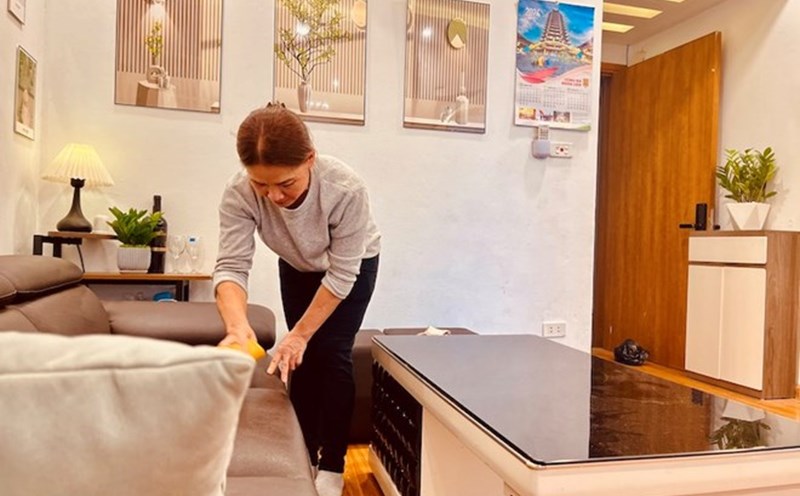1. hanging hook - many are not equal
hangers are an almost indispensable item in wardrobes and living corners. However, " keeping" all kinds of hooks - from iron, plastic, clips, drying ropes - makes the storage space messy, even easy to make the house cramped and less sophisticated.
Solution: switch to using thin hooks, synchronized materials, prioritize velvet hooks or plain hooks with multi-function designs (can hang both shirts, pants and accessories).
Each person only needs 20-30 high-quality hooks for a basic closet.
Damaged, curved, rusty or unused holes should be periodically removed, avoiding the mentality of "a little bit of property" and hoarding them for no reason.
2. Paper boxes, plastic boxes - strategic storage
The boxes are very convenient for holding small items such as accessories, papers, children's toys, etc. But when there are no rules for arranging, they become "the messy dusty disguised" - looking compact but inside is a mystery of unforgettable, hard to find furniture.
Solution: Only keep the boxes intact, with lids or easily stacked, prioritize plain or clearly labeled to easily identify the items inside.
Divide the boxes into groups: document boxes, accessory boxes, medical boxes... Each group should not exceed 2-3 boxes for a living space.
For old boxes, distorted nails or left unused for a long time, be sure to liquidate or recycle them.
3. Shoes - to be compact is a cultural feature
A clean and beautiful house usually starts with the shoe area. Throwing away shoes not only spoils the beauty but also easily brings dirt and bacteria into the living space. In particular, leaving shoes right at the entrance also causes energy accumulation, making the house lack vitality (according to the Fengshu concept).
Solution: Close the shoe closet, with an air intake or deodorant, place in a fixed place near the entrance.
Classify shoes according to frequency of use: regularly used shoes should be kept on the lower floor, rarely used shoes can be kept on high ground or kept separately.
Each member should limit to no more than 68 pairs of shoes used regularly, avoid storing old, outdated shoes that are no longer in use.
4. plastic bags - save or store unconsciously?
The habit of keeping plastic bags "for later use" is very common, but if not controlled, the bag will quickly overflow the kitchen, cabinet, balcony... causing eye discomfort and unsanitary conditions. Many people do not notice that excess plastic bags are part of the environmental problem and unsustainable consumption habits.
Solution: Squeeze the plastic bags into a triangle or a coil and store them in a separate container, placed in the kitchen corner or under the sink.
Limit the maximum number of bags in the box (ex: 30-50 pieces). If it is full, do not keep it anymore.
Gradually replace plastic bags with fabric bags, fishing bags, and reusable paper bags - this is a small act but has a big impact on the environment and lifestyle of the family.
5. Clumsy decorations - the less the more sophisticated
Many women have the habit of buying small decorations: porcelain statues, mini photo frames, fake flowers, scented candles... but when there are too many, they cause confusion, make it difficult to clean and make the space stuffy.
Solution: Only display 1-2 unique decorative items in each area, with personal stories or meanings.
Prioritize decorations with dual functions (both beautiful and convenient), for example: vases can be with pens, candle trays can have keys...
Regularly rotate decorative items seasonally, remove outdated, silver-colored, or items that are no longer suitable for the home style.
Living minimalist does not mean giving up convenience, but is a necessary choice for the living space to become a place to restore energy, nurture emotions and arouse joy every day. A house with few things, a peaceful heart - that is the destination of true neatness.











